
The Great Train Robbery is a 1903 American silent film made by Edwin S. Porter for the Edison Manufacturing Company. It follows a gang of outlaws who hold up and rob a steam train at a station in the American West, flee across mountainous terrain, and are finally defeated by a posse of locals. The short film draws on many sources, including a robust existing tradition of Western films, recent European innovations in film technique, the play of the same name by Scott Marble, the popularity of train-themed films, and possibly real-life incidents involving outlaws such as Butch Cassidy.

The Kinetoscope is an early motion picture exhibition device, designed for films to be viewed by one person at a time through a peephole viewer window. The Kinetoscope was not a movie projector, but it introduced the basic approach that would become the standard for all cinematic projection before the advent of video: it created the illusion of movement by conveying a strip of perforated film bearing sequential images over a light source with a high-speed shutter. First described in conceptual terms by U.S. inventor Thomas Edison in 1888, it was largely developed by his employee William Kennedy Laurie Dickson between 1889 and 1892. Dickson and his team at the Edison lab in New Jersey also devised the Kinetograph, an innovative motion picture camera with rapid intermittent, or stop-and-go, film movement, to photograph movies for in-house experiments and, eventually, commercial Kinetoscope presentations.
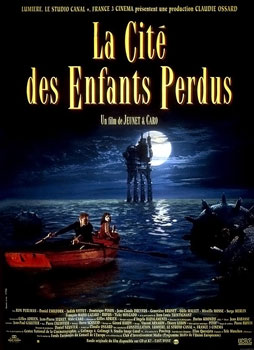
The City of Lost Children is a 1995 science fantasy film directed by Marc Caro and Jean-Pierre Jeunet, written by Jeunet and Gilles Adrien, and starring Ron Perlman. An international co-production of companies from France, Germany, and Spain, the film is stylistically related to the previous and subsequent Jeunet films, Delicatessen and Amélie.
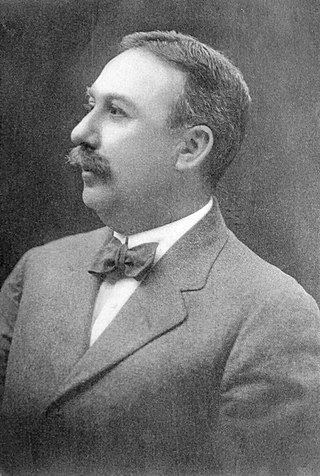
Edwin Stanton Porter was an American film pioneer, most famous as a producer, director, studio manager and cinematographer with the Edison Manufacturing Company and the Famous Players Film Company. Of over 250 films created by Porter, his most important include What Happened on Twenty-third Street, New York City (1901), Jack and the Beanstalk (1902), Life of an American Fireman (1903), The Great Train Robbery (1903), The European Rest Cure (1904), The Kleptomaniac (1905), Life of a Cowboy (1906), Rescued from an Eagle's Nest (1908), and The Prisoner of Zenda (1913).

Actuality film is a non-fiction film genre that uses footage of real events, places, and things, a predecessor to documentary film. Unlike documentaries, actuality films are not structured into a larger narrative or coherent whole. During the era of early cinema, actualities—usually lasting no more than a minute or two and usually assembled together into a program by an exhibitor—were just as popular and prominent as their fictional counterparts. The line between "fact" and "fiction" was not as prominent in early cinema as it would become once documentaries became the predominant non-fiction filmmaking form. Actuality as a film genre is related to still photography.

Fortress is a 1985 Australian thriller film directed by Arch Nicholson and written by Everett De Roche, and starring Rachel Ward, based on Gabrielle Lord's 1980 novel of the same name.

Rescued by Rover is a 1905 British short silent drama film, directed by Lewin Fitzhamon, about a dog who leads its master to his kidnapped baby, which was the first to feature the Hepworth's family dog Blair in a starring role; following the release, the dog became a household name and he is considered to be the first dog film star. The film, which according to Michael Brooke of BFI Screenonline, "marks a key stage in the medium's development from an amusing novelty to the seventh art," and, "possibly the only point in film history when British cinema unquestionably led the world," was an advance in filming techniques, editing, production and story telling.

The Night Before Christmas is a 1905 American silent short film directed by Edwin S. Porter for the Edison Manufacturing Company. It closely follows Clement Clarke Moore's 1823 poem Twas the Night Before Christmas, and was the first film production of the poem.
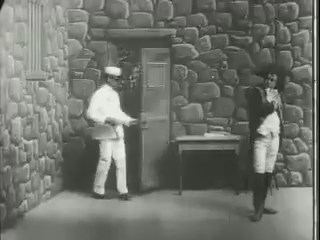
Maniac Chase is a 1904 American short silent comedy film directed by Edwin S. Porter and produced by the Edison Manufacturing Company. The film is a remake of The Escaped Lunatic, a film directed by Wallace McCutcheon Sr. released at the beginning of 1904. This was one of two Biograph Company hits remade by Edison's company in fall 1904, the other being Personal, which was copied as How a French Nobleman Got a Wife Through the New York Herald Personal Columns.

Desperate Poaching Affray is a 1903 British chase film by Wales-based film producer William Haggar. Three minutes long, the film is recognised as an early influence on narrative drama in American film, especially in the chase genre. The film used a number of innovative techniques including on-location shooting, panning shots, and unconventional use of screen edges. The film, along with Frank Mottershaw's film A Daring Daylight Burglary, is considered to have helped launch the chase subgenre and influenced Edwin S. Porter's The Great Train Robbery.
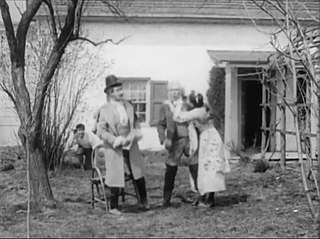
Kathleen Mavourneen is a 1906 silent short film by Edwin S. Porter, produced and distributed by Edison Manufacturing Company. It is based on the song “Kathleen Mavourneen” by Annie Crawford and Frederick Williams Nichols Crouch, which inspired the play by Dion Boucicault.

Uncle Tom's Cabin is a 1903 American silent short drama directed by Edwin S. Porter and produced by the Edison Manufacturing Company. The film was adapted from the 1852 novel Uncle Tom's Cabin by Harriet Beecher Stowe. The plot streamlined the actual story to portray the film over the course of 19 minutes. The film was released on 3 August 1903 at the Huber's Fourteenth Street Museum in New-York.

The Lost Child is a 1904 American short silent comedy film produced by the American Mutoscope & Biograph Company and directed by Wallace McCutcheon, Sr.
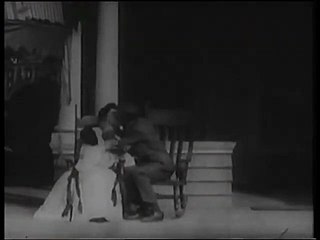
The Widow and the Only Man is a 1904 American short silent comedy film produced by the American Mutoscope & Biograph Company and directed by Wallace McCutcheon, Sr.

The Kleptomaniac, is a 1905 American silent drama film, directed by Edwin S. Porter partly filmed on location in New-York denouncing the discriminatory treatment of the poor by the justice system. It is one of the first American social drama and Courtroom drama.
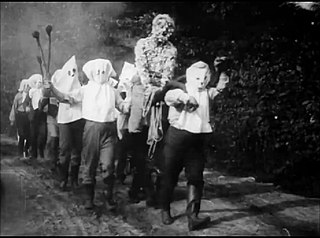
The White Caps is a 1905 American silent drama film, directed by Wallace McCutcheon and Edwin S. Porter showing how a man abusing his wife is punished by a group of white-hooded men. It is one of the first American films exposing conjugal violence against women and showing the action of vigilante groups.

The Train Wreckers is a 1905 American silent drama film, directed by Edwin S. Porter. In the film, the daughter of a railway switchman and lover of a locomotive engineer defeats outlaws trying to derail a train.
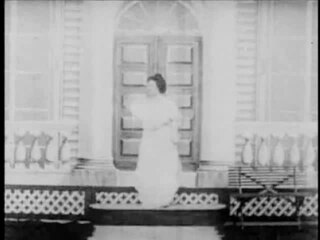
The Seven Ages is a 1905 American silent comedy film, directed by Edwin S. Porter inspired by the monologue All the World's a Stage in William Shakespeare's comedy As You Like It.

Skyscrapers, also known as The Skyscrapers of New York, is an American silent film produced by the Biograph Company which was almost entirely filmed on location on the construction site of one of New-York's tallest skyscrapers.

The 'Teddy' Bears is an American silent film directed by Edwin S. Porter and Wallace McCutcheon, and produced by the Edison Manufacturing Company starting as the fairy tale Goldilocks and ending as a political satire of United States President Theodore Roosevelt.





















